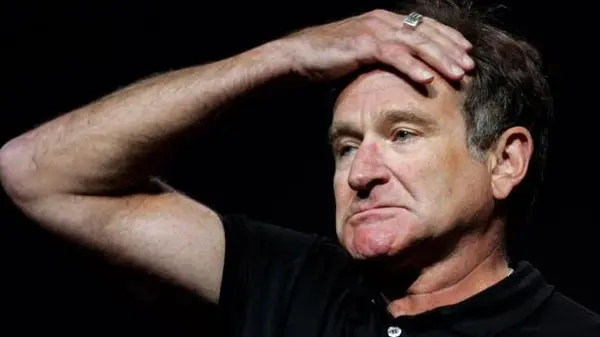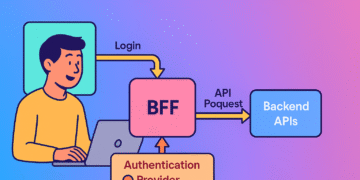The world of artists—a realm rich with actors, musicians, writers, and painters—often seems to glimmer with an almost ethereal beauty, painting a picture of an idyllic life. Their prodigious talent and the resultant praise not only establish them as icons but also as sources of inspiration to countless admirers. These pedestals of achievement, however, cast long shadows that conceal a labyrinth of challenges. Diving deeper beneath the surface, the glamour starts to fade, revealing a mosaic of struggles intricately interwoven with their artistic lives. Every action, every word, and even their silences are magnified, analyzed, and occasionally misinterpreted by an ever-watchful public and media. The constant attention can be asphyxiating. The same spotlight that celebrates their successes also invades their private moments, transforming solitude into an endangered luxury.
Further complicating this dynamic is the commercial aspect of the industry. Rather than valuing artists for the depth of their passion or the breadth of their emotions, there’s a risk of them being pigeonholed as mere assets, commodified, and marketed for maximum profit. This reduction of their identity to marketability can be both dehumanizing and demoralizing. Moreover, the very nature of their profession—be it late-night performances, unpredictable bursts of inspiration, or long stretches of erratic schedules—disrupts the conventional rhythm of life. While the world adheres to its standard timelines, artists often find themselves dancing to a different beat, a reality that can further magnify feelings of isolation.
Add to this mix the dreaded creative blocks—periods where inspiration is elusive—and it’s hardly surprising that the weight of these combined pressures can be overwhelming. For many, it spirals into emotional and psychological challenges, with depression being a notable concern. It’s vital to remember, then, that behind the awe-inspiring performances and masterpieces, artists are humans first. Their experiences, while magnified, echo universal themes of seeking validation, battling pressures, and striving for inner peace. Recognizing their struggles, and offering empathy and support, is crucial—not just for their well-being, but for the continued enrichment of the arts and culture they gift to the world.

1. The Attention Tug-of-War:
The ascent to fame is a tumultuous path laden with immense sacrifices, effort, and emotional upheaval. Upon reaching a pinnacle of recognition, artists are immediately beset by the dread of fading into obscurity, a constant specter that shadows their every achievement. This newfound status places them perpetually in the public eye, subject to relentless scrutiny and evaluation. In a world that thrives on the next big thing, the dimming of their limelight to illuminate another emerging sensation can drive some to take drastic measures, resorting to startling behaviors just to reclaim their lost spotlight. This relentless pursuit of affirmation, coupled with the gnawing fear of being forgotten, subjects the artist to an exhausting emotional whirlwind, intensifying feelings of self-doubt and vulnerability. This debilitating cycle not only saps their spirit but also paves the way for the ominous cloud of depression to settle in, casting a shadow over the once-bright trajectory of their career.

2. The Disappearing Act of Privacy:
Prominent artists, in the taxing exchange for their celebrated status, frequently find their private lives traded off on the altar of fame. No longer shielded by anonymity, every facet of their existence becomes an open book, with paparazzi lurking in shadows, fans eagerly dissecting each of their actions, and critics poised to analyze and sometimes berate their choices. This relentless scrutiny transforms their life into a suffocating fishbowl, where every move is magnified and evaluated. As days turn into years, this unyielding gaze engenders a feeling akin to being ensnared within shrinking walls, each moment becoming increasingly stifling. The culmination of this perpetual watch is a burgeoning sense of dread and desolation as artists grapple with the intertwining tendrils of anxiety and deep-seated sorrow, a price often unseen behind the glittering facade of fame.
3. Puppets on a String:
Within the bustling labyrinth of the entertainment industry, artists frequently find themselves reduced to mere revenue generators for a myriad of stakeholders, from managers and agents to record labels. This dehumanization transforms them into tradeable commodities, their worth often measured in ticket sales and chart rankings rather than the depth of their talent or the essence of their humanity. In the relentless pursuit of the next chart-topping hit or the next headline-making tour, managers, driven by profit motives, might exert undue pressure, pushing artists to the brink of their physical and emotional capacities. This systematic commodification not only robs artists of their personal agency but also engulfs them in a sense of isolation, where genuine human interactions become a rarity, replaced by transactional relationships. Marooned in this sea of exploitation, artists grapple with feelings of being used, culminating in a profound sense of desolation—a dark undercurrent often masked by the bright lights of stardom yet undeniably potent in its capacity to precipitate depression.

4. The Luxury of Dependency:
Navigating the whirlwind of celebrity life, artists find themselves thrust into a maelstrom of responsibilities, leading them to lean heavily on a battalion of assistants for even the most mundane tasks. The allure of such a lifestyle, where schedules are meticulously managed, travel seamlessly arranged, and attire curated by experts, can easily be mistaken for luxury by the onlooking world. However, this very dependence, while seemingly opulent, harbors a subtle danger. With every chore delegated and every decision dictated, artists may gradually lose touch with their sense of self-direction. Continuously operating under directives, from when to rise to when to perform, can foster a creeping sensation of not being in the driver’s seat of one’s own life. Over time, this incessant guidance, however well-intentioned, can erode an artist’s sense of autonomy, birthing a profound sense of helplessness that lurks beneath the glamorous veneer of stardom.
5. The Out-of-Sync Life:
The artist’s journey veers distinctly away from the traditional 9-to-5 cadence that much of the world adheres to. Instead of winding down as dusk sets in, singers may find themselves stepping onto stages under starlit skies, painters might be caught in a fervent dance with their muses at the stroke of midnight, and actors could be immersed in nocturnal shoots, replicating scenes in the hush of the night. This inherent discord with society’s rhythms creates a chasm, setting artists apart in their own temporal realm. As the world bustles with daily routines ensconced in its rhythm, artists often grapple with a sense of dislocation, meandering in search of a purpose that extends beyond their artistic endeavors. This divergence from the mainstream schedule, more than just affecting their daily lives, carries implications for their psychological state. The absence of a consistent routine, coupled with the solitary nature of their hours, can inadvertently become a breeding ground for emotional unrest, subtly undermining the very essence of their mental equilibrium.
6. The Dreaded Artist’s Block:
In the undulating journey of artistic creation, there emerges an almost inevitable shadow, a specter known as the ‘artist’s block’ that looms over every creator at various junctures in their career. This daunting phase, characterized by an arid expanse of creativity, manifests as a vexing void where muses remain silent and inspiration becomes a distant mirage. Such barren periods are not just voids of creativity but become tumultuous emotional terrains, riddled with the gnawing pangs of self-doubt, an acute sense of looming obsolescence, and the haunting premonition that their zenith of creativity may already be a chapter in the past. These swirling tempests of negative introspection, if left unchecked, have the potential to cascade with alarming rapidity into the abyss of desolation, casting a pall over the very spirit that once crafted masterpieces.

Conclusion:
Embarking on the path of artistry is akin to navigating the twin terrains of elation and vulnerability. While one facet dazzles with the euphoria of conjuring creations and basking in the warm glow of accolades, the other, often overshadowed, lays bare the artist’s soul, exposing a fragile tapestry of emotions and sensitivities. This duality, intrinsic to the artist’s journey, underscores the imperative for society to peer beyond the limelight, acknowledging the often tumultuous emotional landscapes these creators traverse. As the beholders and beneficiaries of their craft, we, the audience, shoulder a profound duty: to not only revel in the art but to also envelop its creator in a cocoon of respect and empathy. By granting artists the latitude and compassion they so desperately require, we pave the way for them to flourish, ensuring their mental and creative well-being remains in harmonious synchrony.










































